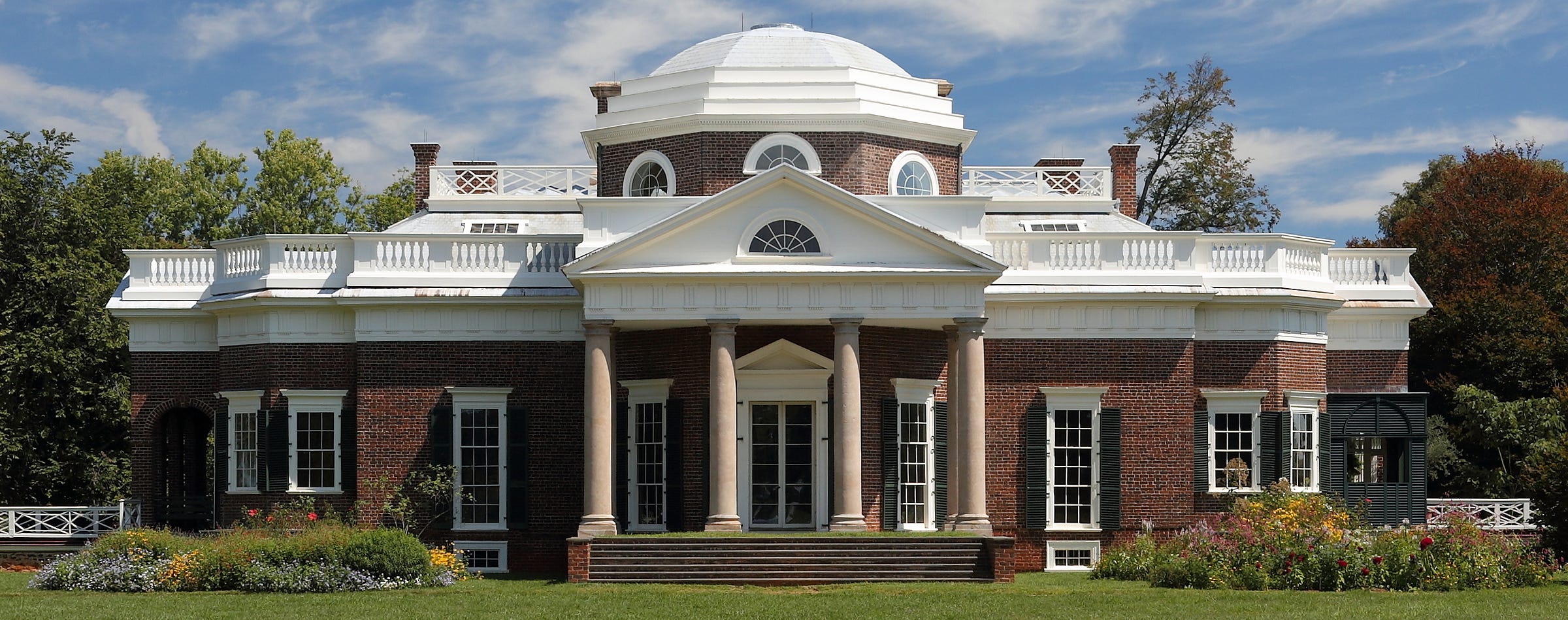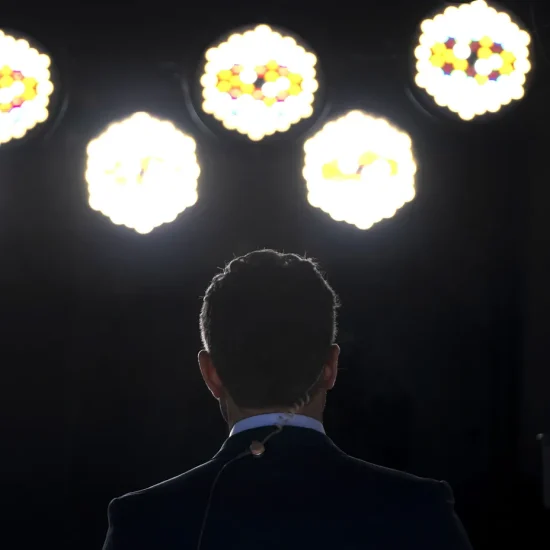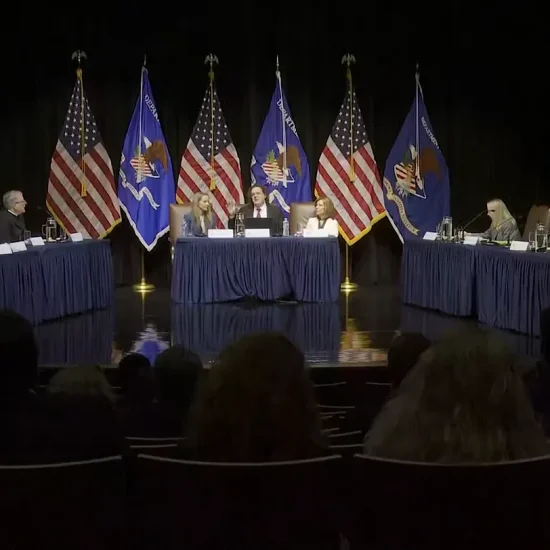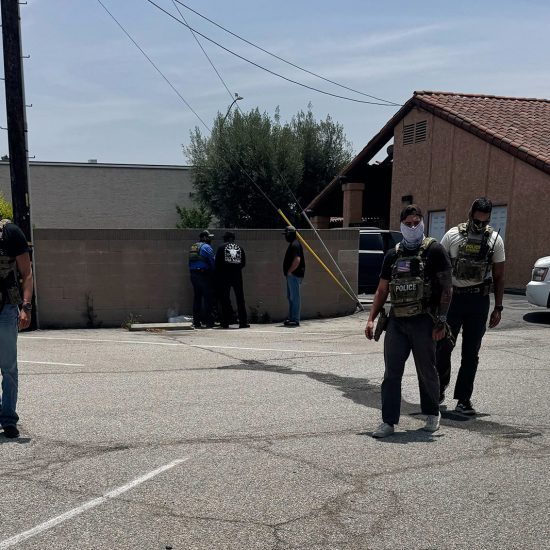
It must be difficult being Speaker of the House Mike Johnson these days. He’s trying to avoid a government shutdown this month but leads a divided caucus. Some of his ideological allies have started turning against him. And he keeps hurting himself as he runs into walls.
Well, I don’t know that last part for sure, but I assume it occurs considering some of his comments.
On Jan. 1, 1802, President Thomas Jefferson wrote a letter to Baptists in Connecticut famously calling the new country’s constitutional protections “a wall of separation” between church and state. Two hundred years later, a Baptist from Louisiana wants to pretend the wall doesn’t exist.
“The separation of church and state is a misnomer,” Johnson said recently on CNBC. “People misunderstand it.”
Johnson then offered a creative interpretation of Jefferson’s phrase, claiming the wall was only intended to keep the state out of the church but not the church out of the state. As he argued on his podcast before his election as speaker: “The founders wanted to protect the church from an encroaching state, not the other way around.”
It’s a claim he’s made for years, including in sermons to churches. But the argument shows an unawareness of a basic architectural concept that even children understand.
So let me put this in elementary terms for Speaker Johnson. Look at the wall closest to you. Not a door or a window, but a wall. It is blocking you from moving into the next room or space. But that wall is also preventing anyone on the other side from coming over. It doesn’t work just one way. If someone moves through a wall from one direction like the Kool-Aid Man, they will leave a hole that will allow people to go in both directions. That’s how walls work. (Maybe I should try a picture book about walls if that doesn’t make sense to him.)

Speaker of the House Rep. Mike Johnson walks near a wall inside the Capitol on Nov. 1, 2023. (Jose Luis Magana/Associated Press)
Johnson’s not alone in trying to tear down Jefferson’s metaphorical wall. As Rep. Lauren Boebert of Colorado argued that “the church is supposed to direct the government,” she groped around for a way to dismiss the legal principle that blocks such a theocracy: “I’m tired of the separation of church and state junk that’s not in the Constitution. It was in a stinking letter, and it means nothing like what they say it does.”
And David Barton, a Republican activist and pseudo-historian who has influenced Johnson’s opinions on church-state issues, popularized the idea that Jefferson only wanted to stop the government from interfering with churches (and not also prevent churches from interfering with the state). But Barton has a long history of not only misunderstanding historical issues but also using fake quotes and false claims. Like this whopper he told about Jefferson’s letter: “The First Amendment has erected a wall of separation between church and state, he said, but that wall is a one-directional wall. It keeps the government from running the church, but it makes sure that Christian principles will always stay in government.”
Putting aside the fact Barton lied and Jefferson never said those words, the idea of a “one-directional wall” sounds like an absurdist concept from that “wonderland” Alice wandered into. It’s ironic that the party chanting “build the wall” apparently thinks they are completely porous in one direction.
But there’s more than architectural ignorance going on here. The arguments by Barton, Boebert, and Johnson deliberately misrepresent Jefferson’s metaphor precisely because they understand the constitutional wall stands in the way of their Christian Nationalist agenda. So this issue of A Public Witness will look back at Jefferson’s letter penned 202 years ago this week and why it still matters today.

Jefferson the Architect
“Architecture is my delight, and putting up, and pulling down, one of my favorite amusements.”
Although better known as the third president of the United States and primary writer of the Declaration of Independence, Jefferson also loved architecture. He designed numerous buildings, including at the University of Virginia. But the structure he called his “essay in architecture” showed how much he delighted in putting up and pulling down and putting up again. Jefferson spent decades building (with enslaved labor), redesigning, and altering his beloved Monticello.
In Jefferson’s architectural drawings and work, he demonstrated that he understood the definition and design of walls. He added walls to create new rooms, tore down walls to enlarge rooms, and built walls outside to mark out territory. So when Jefferson the architect explained church-state relations under the First Amendment, he understood the object he employed as a metaphor. He didn’t choose a door or gate that locks on one side as a metaphor. He called it a wall separating both church and state from invading the space of the other.
To suggest that Jefferson thought a wall only blocked one side or could be “one-directional” belies reason. When he said a “wall,” he meant a wall.

Thomas Jefferson’s Monticello, which has lots of walls. (Martin Falbisoner/Creative Commons)
Jefferson understood a wall needs two sides to actually function as a wall. And he recognized the need for such a wall impacting both sides of the church-state equation because Jefferson knew who was attempting to violate the rights of conscience for those of minority religious beliefs: religious people trying to make government an extension of the church.
A key flaw in Johnson’s attacks on the church-state wall is that he misunderstands history. Who does Johnson think led the state that was interfering with the church in the founding era? Maybe he conjures up some image of allegedly godless forces trying to run the government, but that simply doesn’t describe the founding period of our nation that lacked the religious diversity of today.
The Baptists who received Jefferson’s letter knew who they needed a wall to protect them from — their fellow Christians. It was Anglicans in Virginia and Congregationalists in Connecticut and Massachusetts who used the power of the state to fine and even imprison Baptists for preaching or refusing to pay taxes to support the state churches. Baptists celebrated Jefferson’s presidential win precisely because he believed in religious liberty that requires church-state separation.
So when Jefferson wrote about the church-state wall, those Baptists cheered since they knew such a wall — not a door or a window — was needed. They needed a wall to prevent the state from interfering with their churches and to prevent other churches from christening the state as an arm of one faith. They needed a wall that prevents intrusions from both sides.

Get cutting-edge reporting and analysis like this in your inbox every week by subscribing today!
Guarding the Wall
Despite comments suggesting that Jefferson’s metaphorical wall only worked one way, I think Johnson does actually know how walls work. He just doesn’t like the metaphor of a wall because he doesn’t want obstacles blocking his slice of Christianity from running the nation and enjoying special privileges.
That’s why he’s spent years working as an attorney and a lawmaker to tear down church-state separation. And it’s why he’s preached in churches about his vision of the U.S. as “a Christian nation.” He’s even claimed Jefferson was “divinely inspired” to write the Declaration of Independence, used fake quotes to justify his belief the founders meant for this to be “a Christian nation” (despite them not putting that in the Constitution), and insisted that as a lawmaker he would ignore U.S. Supreme Court decisions he dislikes. As he declared in a church while holding up a Bible after the Obergefell decision legalizing same-sex marriage: “I don’t care what five lawyers on the Supreme Court say; I care what this book says.” That doesn’t work for someone who took an oath to uphold the Constitution in a pluralistic democracy.
There are legitimate debates to be had about where to build the wall between church and state. Jefferson moved walls inside Monticello to change the rooms. Perhaps we need at times to make adjustments to how we draw our church-state lines. Jefferson also built serpentine garden walls that weaved with curves. Perhaps we need a church-state wall with some give and take. But regardless of whether we move it some or if we curve it, we still need such a wall. And we need it to function like a wall by actually governing traffic in both directions.
As long as the wall is protected, then Johnson and others pushing Christian Nationalism can’t succeed. And that’s exactly why Johnson tries to tear down the wall or even pretend it’s not a wall in hopes we won’t notice him hitting it with a sledgehammer.
“The separation of church and state is the cure for Christian Nationalism in the United States,” constitutional lawyer Andrew Seidel, vice president of strategic communications for Americans United for Separation of Church and State (where I serve on the national board of trustees) and author of American Crusade: How the Supreme Court is Weaponizing Religious Freedom, explained last year during the Summit for Religious Freedom. “They cannot get what they want if there is a separation of church and state, if that wall between the two is tall and strong.”
Separation of church and state is good for both. Punching a hole in that wall might give Johnson more power, but it’s bad news for democracy and for the Christian witness. As Roger Williams, the founder of the first Baptist church in the Americas and the person from whom Jefferson borrowed his wall metaphor, put it, “Forced worship stinks in God’s nostrils.” We need a wall to protect us from stinky Christian Nationalism.
As a public witness,
Brian Kaylor







